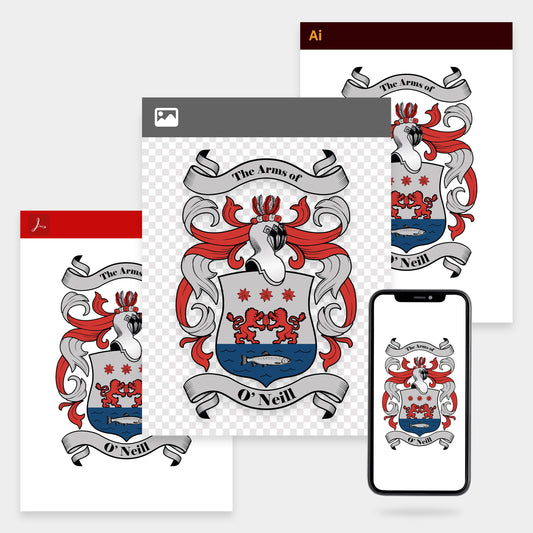Gray Family Crest

 Colors on the Gray family crest explained
Colors on the Gray family crest explained
Argent (silver) -represents sincerity and peace and the Gray family reputation for these values.
Gules (red) - symbolizes martyrdom and historic military strength when called upon.
 Symbols on the Gray family crest explained
Symbols on the Gray family crest explained
The Lion - represents ferociousness, bravery and valour, one of the most desirable family crest symbols.
The anchor - represents hope and salvation.
Click to purchase this family crest or browse other family crest offers.
 Origins of the Gray family name
Origins of the Gray family name
The earliest known origin of the name Gray is from the Old English word græg, which means "gray" or "grey".
This word was originally used to describe someone based on their color of hair, skin tone, or clothing in ancient times.
The name then slowly became a surname. The name Gray is also thought to be derived from the Old Norse word grár, which means "grey".
For a more detailed history, see our crest & history products
 Summary of the Gray family and the Gray family crest
Summary of the Gray family and the Gray family crest
- The Gray family name is derived from the Old English word "græg" meaning "grey", a description of hair or green eye color in ancient times.
- In Scotland, The Gray family can also be traced back to the Clan Gunn of Scotland.
- The first recorded use of the Gray surname dates back to the 12th century.
- The first recorded use of the name was in the 11th century, when William de Gray was listed in the Domesday Book
- The Gray family were initially based in Yorkshire, England.
- The Gray family were also amongst the first settlers in New Zealand, arriving in 1839.
- The most famous member of the Gray family is probably the British author, Sir Thomas Gray (1716-1771).
- The Gray family name in America can be traced back to the early 1600s, when English settlers began arriving in North America.
- The Gray family were one of the first families to settle in the American colonies, arriving in Massachusetts in 1630.
Shop our bestsellers
-
Research + Family Crest Print
Regular price From $33.00 USDRegular priceUnit price per$54.00 USDSale price From $33.00 USD Sale
Sale -
Premium Crest & History Package
Regular price From $199.00 USDRegular priceUnit price per
-
Research + Double Crest
Regular price From $49.00 USDRegular priceUnit price per$54.00 USDSale price From $49.00 USD Sale
Sale -
Digital Crest Files
Regular price $33.00 USDRegular priceUnit price per$49.00 USDSale price $33.00 USD Sale
Sale




